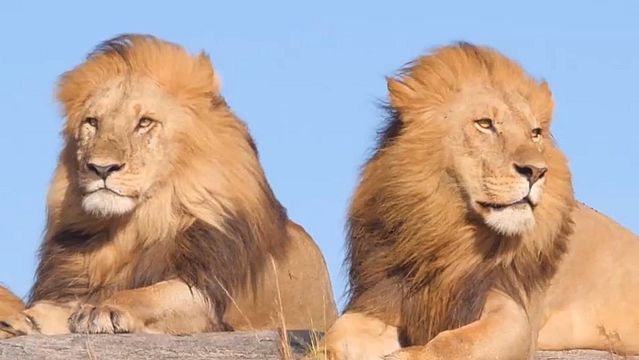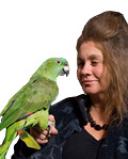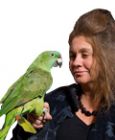Post-Traumatic Stress Disorder
A Bad Hair Day for Lions and Science
Science dodges the question of captivity, confinement, and isolation.
Posted October 23, 2018

One day, a group of us, professors and researchers, were sitting around a conference table discussing a new National Science Foundation (NSF) program. The national initiative was developed to provide support for “minorities” in environmental science graduate programs. Historically, non-white groups have been poorly represented in these fields.
The initiative announcement created quite a stir. It promised a lot of money. The interested departments, however, were at a loss as to how to reach populations who were virtually non-existent in their fields. Someone suggested contacting “Richard,” a graduate student and researcher in the organization. One department head asked, “Who’s Richard?” A second responded, “He works with Jack.” Another piped up, “His office is just down the hall from Barb’s.” This went round and round the table until someone stepped in and said, “He’s the black guy.”
Discussions about a lioness at the U.S. Indianapolis Zoo who killed her cellmate, a male lion, are reminiscent of this story. According to zoo testimony:
- “Zoo personnel do not know what caused Zuri, a 12-year-old female, to attack Nyack, a 10-year-old male.”
- “The animals had lived in the same enclosure together for eight years with no history of significant conflict, according to detailed zoo logs.”
Lion researchers were consulted. They, too, were perplexed. A world-renowned lion researcher “was surprised by the attack.” Another researcher “agreed that this incident is surprising.” One of the experts suggested “that the individual lions' personalities played a role in the killing.” Perhaps, he added, Zuri attacked and killed Nyack because “she was having ‘a bad day.’” [1,2]
For all the authority and scrupulous attention to detail that wildlife “experts” claim they possess and maintain, they failed to mention captivity as a possible underlying cause for Zuri’s actions. Similar to the professors’ reluctance to name Richard as “the black guy,” lion experts studiously avoided the obvious. The most parsimonious scientific hypothesis is that Zuri acted the way she did as a result of her experiences in captivity. Why is this a leading hypothesis?
First, captivity is the defining factor distinguishing “wild” (regarded as providing the normative baseline of behavior) from “non-wild” lions. Indeed, if such attacks in the wild are “unprecedented” and “never heard of,” then it is logical to look at what is different between the two situations. Captivity is not the wild.
Zoo individuals such as Zuri live behind bars in tiny enclosures in unnatural social and ecological settings. While it is true that, tragically, wild conditions today approach those of captivity in terms of the magnitude of human-caused stressors and violence (i.e., habitat loss, translocation, relentless hunting, loss of food base), life in a zoo is not the same as in the wild. Yet, nowhere in the reported commentary is there mention of the severe disruptive effects of captivity aside from a single oblique remark that “such incidents have been filmed at safari parks.” [1]
Negative effects of captivity on lion and other animal brains, minds, and behavior is no secret. In fact, this understanding is the backbone of all biomedical research. Captivity, confinement, and isolation of animals are well-documented methods purposefully employed by biomedical researchers to cause psychological trauma and disorders. [3, 4] Resultant symptoms include infanticide, murder, psychoses, and other psychiatric disorders—all common to animals kept in zoos. Zoos routinely administer anxiolytics and other psychotropic drugs to their charges who display such symptoms, which are unsettling and off-putting to zoo visitors. [5]
Neither are captivity effects and other forms of psychophysiological assaults unfamiliar to wildlife researchers. Effects of human-caused psychological and social violence on captive and free-living wildlife made international news with the “discovery” of Elephant Post-Traumatic Stress Disorder (PTSD) 15 years ago. Since then, there has been a growing literature linking biomedical findings to human-caused psychiatric disorders in free-living and captive wildlife. [6,7,8,] Therefore, it cannot be argued that captivity effects on lions' brains, minds, and behavior lie outside the purview of lion experts. Given this widespread scientific knowledge, let alone common sense, why didn’t lion experts name captivity as the leading suspect for the “surprising incident”?
Science prides itself on its “objectivity,” protocol which prohibits personal, professional or institutional interests to interfere in the search and explication of “truth.” Nonetheless, scientists' version of the Hippocratic Oath is not always followed. Reasons for excluding or distorting information usually draw from one or a combination of economic, social, and psychological incentives.
For example, most lion and other wildlife conservation research is funded at least in part by institutions that profit from wildlife captivity (e.g., the relationship between the Bronx Zoo and the Wildlife Conservation Society). Subsequently, naming the source of zoo revenues (i.e., the keeping and breeding of animals for profit) as causal for the upsetting and "surprising" act by Zuri immediately shifts attention and responsibility to the institutions who hold research purse strings.
A similar conflict-of-interest arises with other institutions that also rely on wildlife exploitation to fill their coffers. For example, government agencies such as state and national Fish & Wildlife Services usually require scientists to apply and obtain a permit to conduct research. As one puma biologist put it to me when I tried to interview him for my book on carnivores, “If I want to keep my puma research going, I need the agency’s permits. Subsequently, there are certain things I can’t say and certain people, like you, with whom I can’t associate because that information undermines the reputation of the agency. If I do speak out against hunting, then I am at risk of killing the agency goose who provides me with the necessary golden permit eggs that I need to do my research. No permit, no research. No research, no money. No money, no job. It’s as simple as that.” [9]
Although the Indianapolis Zoo "plans to conduct ‘a thorough review’ to understand what happened,”[2] it is unlikely that captivity will be discussed. Animal captivity is the revenue engine for zoos. So how can we stop the torture machinery of animal exploitation? When scientists speak the truth of science, whatever the consequences. The animals, as well as science, deserve a lot more respect than scientists give them.

References
[1] Prasad, R. 2018.Why did this lioness kill the father of her cubs? BBC News. Retrieved October 23, 2018 from https://www.bbc.com/news/world-us-canada-45947416.
[2] Hugo, K. 2018. Lioness kills father of her cubs in enclosure at Indianapolis. The Independent. Retrieved October 23, 2018 from zoohttps://www.independent.co.uk/news/world/americas/lioness-kills-lion-cu….
[3] Bradshaw, G.A. 2012. A convenient untruth. Psychology Today. Retrieved October 23, 2018 from https://www.psychologytoday.com/us/blog/bear-in-mind/201204/convenient-…
[4] Bradshaw, G. A., Capaldo, T., Lindner, L., & Grow, G. (2009). Developmental context effects on bicultural posttrauma self repair in chimpanzees. Developmental Psychology, 45(5), 1376.
[5] Braitman, L. 2014. Even gorillas and bears in our zoos are hooked on Prozac. Wired. Retrieved October 23, 2018 from https://www.wired.com/2014/07/animal-madness-laurel-braitman.
[6] Siebert, C. (2006). An elephant crackup. The New York Times Magazine, 8, 42-48. Retrieved October 23, 2018 from https://www.nytimes.com/2006/10/08/magazine/08elephant.html.
[7] Bradshaw, G. A. (2005). Elephant trauma and recovery: from human violence to trans-species psychology. Unpublished dissertation, Pacifica Graduate Institute, Carpinteria, CA, 69-94.
[8] Bradshaw, G. A., Schore, A. N., Brown, J. L., Poole, J. H., & Moss, C. J. (2005). Elephant breakdown. Nature, 433(7028), 807.
[9] Bradshaw, G. A. (2017). Carnivore minds: Who these fearsome animals really are. Yale University Press.




